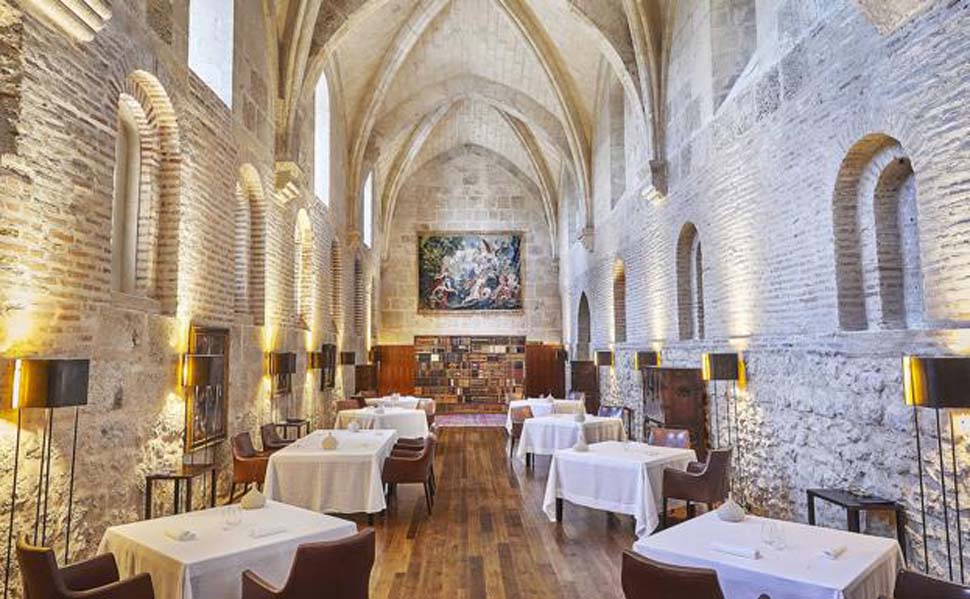Abadia Retuerta's Refectorio is not only one of Spain's most beautiful restaurants: it combines the charms of a 13th-century monastery as a backdrop to Marc Segarra's cuisine, arriving daily from the garden.
The news
For so many, self-production is marketing: all it takes is a couple of herb beds, taking a few photos, and you're done. Among those who are instead unearthing the stylistic potential of it is Spain's Marc Segarra, who’s been leading restaurant Refectorio since 2016. It is housed in a 13th-century monastery converted into a resort, Abadia Retuerta le Domaine, equipped with 20 exclusive suites and a full-scale vegetable garden on the banks of the Duero River. It was soon noticed by the Michelin guide, which also granted a green star for sustainability; the first Michelin star was achieved in 2014 by Pablo Montero under the direction of Andoni Luis Aduriz.

"The monks knew what they were doing very well," Segarra observes about the spaces, which are still more or less bound to their original uses: the restaurant in the canteen, above the cellar and a few steps away from the vegetable garden. Since he arrived, the effort has been to locally center the cuisine more and more on the land, aiming to make the ingredients be locally sourced as much as possible. The vegetable garden has thus reached the remarkable size of 2,000 square meters.
Tending it is Victor Frechilla, who agrees with the chef on varieties to plant and ripening of the produce. Tilling is done biodynamically, with the prospect of regenerative agriculture; but there are also a few chickens and animal-drawn plowing in the plans. This is a small oasis of shapes and colors in an area now colonized by cereal monoculture.
There are a dozen tomato varieties, for example, and their early ripening due to the heat, several weeks early, has forced Segarra to jump through hoops to avoid waste. Then there is an eggplant of an unknown variety undergoing experimental cultivation to be tested; and again, garlic braids, ready to be dried. While yarrow ends up in the partridge dish, to which it gives the right note of bitterness, friggitelli become granita at dessert time and endive is baked in clay to garnish the meunière.
Monks, it is known, did not disdain wine either, or the cellar here is respectable. Agusti Peris, sommelier and maître is in charge of the cellar.
Source: La Vanguardia
Find the reference article here











